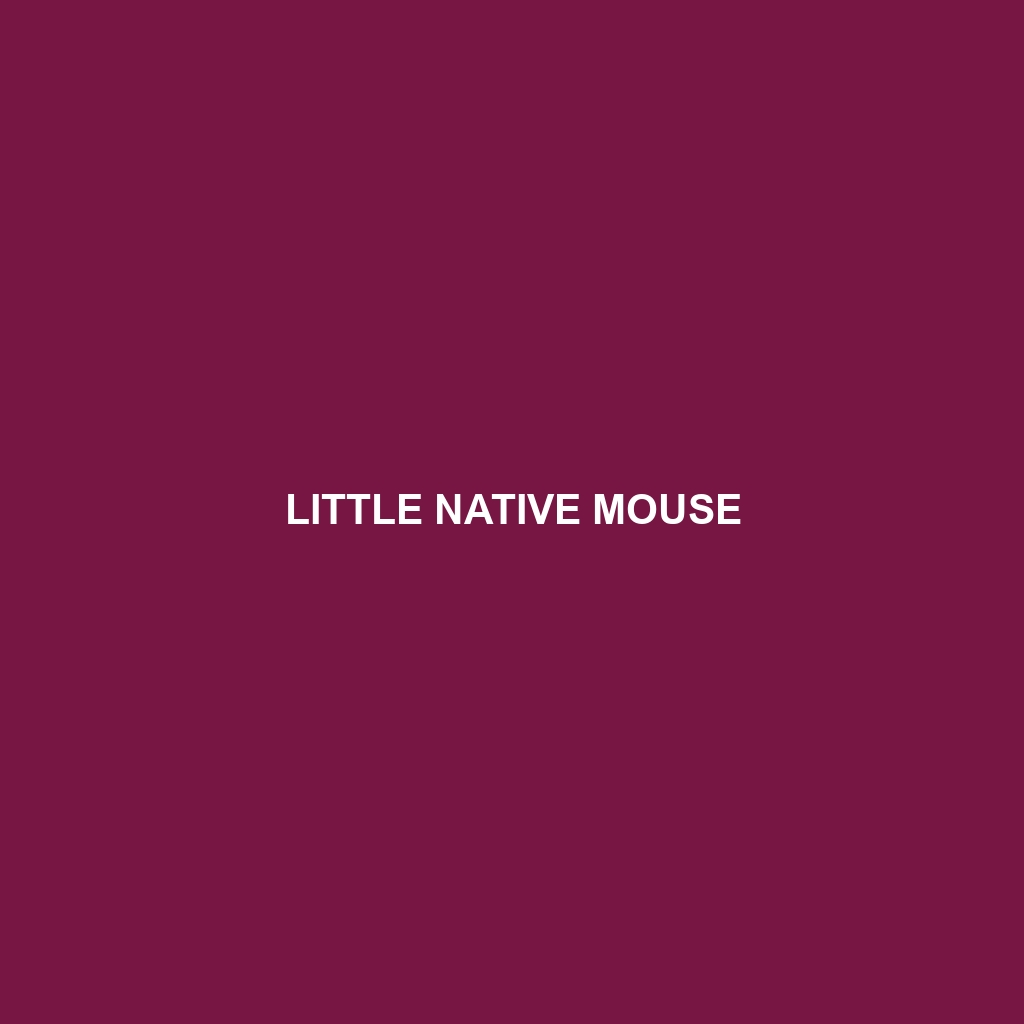Little Native Mouse
Common Name: Little Native Mouse
Scientific Name:
Habitat
The Little Native Mouse is primarily found in various regions of Australia, thriving in habitats such as woodlands, grasslands, and scrublands. These mice prefer areas with dense ground cover, which provides necessary shelter from predators as well as foraging opportunities. They are often spotted in areas that are less disturbed by human activity, ensuring their natural environment remains intact.
Physical Characteristics
Measuring approximately 8 to 10 centimeters in length, the Little Native Mouse exhibits a slender body with a long and hairy tail that often exceeds its body length. Their fur is typically light brown or gray with creamy underparts, which helps them blend seamlessly into their surroundings. Distinctive features include large eyes and ears, which enhance their night vision and hearing, making them adept at navigating their environment.
Behavior
The Little Native Mouse is primarily nocturnal, exhibiting peak activity during the night when they forage for food. They are highly social creatures, often found in small groups. Their behaviors include digging burrows for nesting and establishing social hierarchies within their groups. These mice are also known for their agility and ability to climb, which aids in avoiding predators.
Diet
The Little Native Mouse has a herbivorous diet, primarily consisting of seeds, fruits, and green plants. They are particularly fond of grass seeds, which form a significant portion of their diet. Their foraging habits often extend to scavenging, allowing them to take advantage of various food sources available in their habitat.
Reproduction
This species breeds throughout the year, with peak breeding seasons typically occurring in spring and summer. Female Little Native Mice can produce several litters annually, with each litter containing 3 to 7 offspring. The young are born blind and hairless, relying heavily on their mother for nourishment and protection during the initial weeks of life.
Conservation Status
The current conservation status of the Little Native Mouse is classified as Least Concern by the IUCN, but habitat loss and fragmentation due to urban development and agriculture pose ongoing threats to their populations. Continuous monitoring is essential to ensure their survival in the wild.
Interesting Facts
Did you know that the Little Native Mouse has an extraordinary sense of smell? This adaptation allows them to locate food efficiently and detect predators from afar. Additionally, these mice play a crucial role in seed dispersion, aiding in the regeneration of their habitats.
Role in Ecosystem
The Little Native Mouse is an integral component of its ecosystem, serving as a prey species for various predators, including birds of prey and snakes. Their foraging habits not only support their survival but also help in the distribution of seeds, facilitating plant growth and biodiversity in their habitats.
